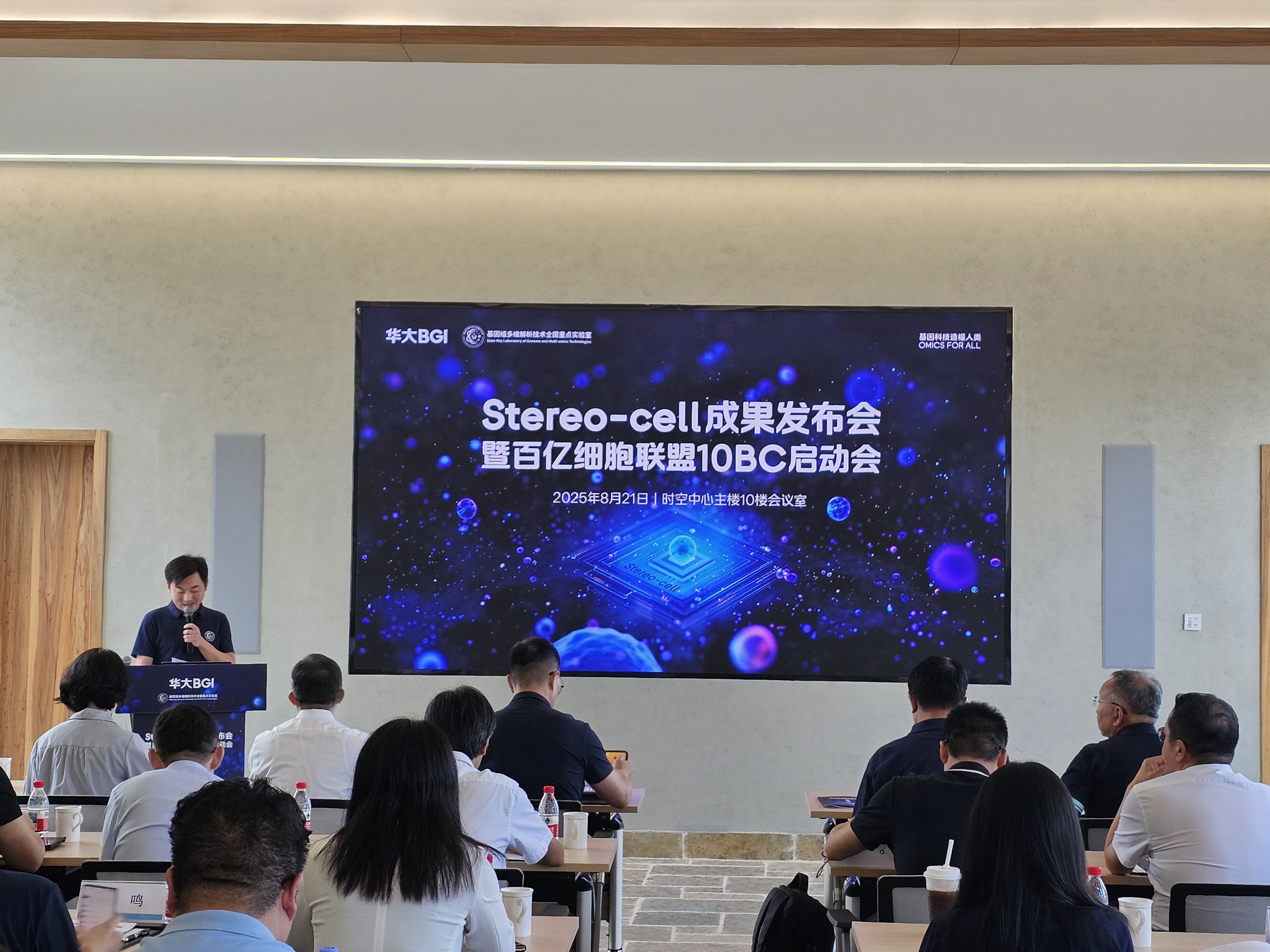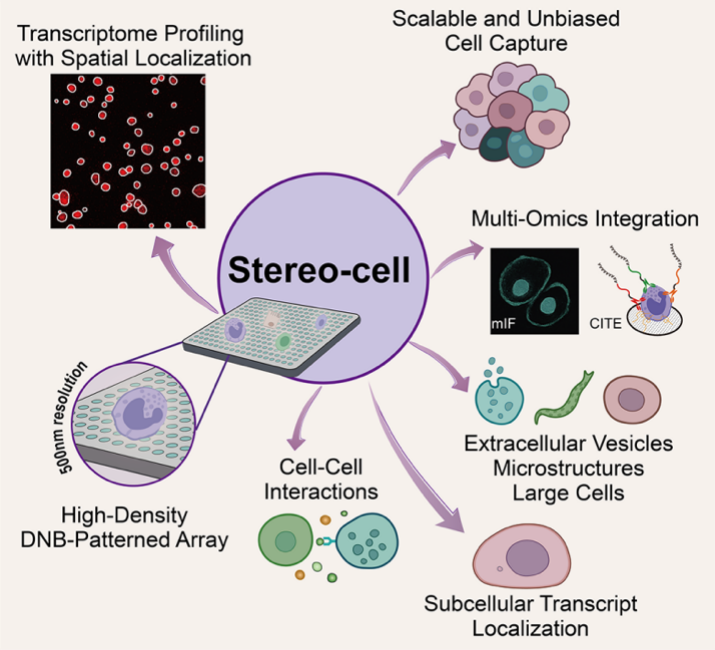Chinese researchers develop leading cell-omics tech
Writer: Chen Siqi | Editor: Lin Qiuying | From: Original | Updated: 2025-08-22
Chinese scientists have developed a revolutionary cell-omics technology that promises to transform our understanding of life processes at the cellular level. The breakthrough technology, named Stereo-cell, was described in a study published Aug. 22 in the prestigious journal Science.
The technology was developed by the State Key Laboratory of Genome and Multi-omics Technologies, led by the BGI-Research, in collaboration with multiple institutions.
Unlike conventional single-cell sequencing technologies that often force researchers to choose between capturing cell types or preserving morphological information, Stereo-cell provides a comprehensive, multi-dimensional view of cellular environments.

A scene from the BGI Center, the company’s global headquarters in Yantian District.
“The breakthrough will drive new scientific discoveries,” said Wang Jian, chairman and co‑founder of BGI Group, during a conference presenting the tech, which was held at BGI Center, the company’s global headquarters in Yantian District, on Aug. 21. Wang added in the livestreamed video that group would like to extend its benefits beyond China to the international research community.

Wang Jian, chairman and co‑founder of BGI Group, delivers a speech through a livestreamed video during the conference. Photos by Chen Siqi except otherwise stated
The ceremony also witnessed the launch of 10 Billion Cells Alliance (10BC). Leveraging the Stereo‑cell platform, the State Key Laboratory of Genome and Multi-omics Technologies has co-founded the 10BC with 18 institutions. The alliance plans to build comprehensive cellular resources to decode fundamental biological rules, develop virtual cell models and accelerate the integration of biological data with AI‑driven technologies for research and clinical translation.


A scene of the conference presenting the revolutionary cell-omics technology
Stereo-cell utilizes a high-density DNA nanoball (DNB) array chip. Nanoballs measuring about 220 nanometers in diameter are arranged at 500‑nanometer intervals on the chip and capture cells in situ via electrostatic adsorption. This design preserves cell morphology and spatial context while avoiding the sampling bias and cell loss that can occur with droplet‑based methods.
The technology delivers four major advances. First, unbiased, high‑precision capture: instead of favoring certain cell types, Stereo‑cell uses a dense array of nanoscale DNA nanoballs to capture cells in place, avoiding the loss or deformation that can occur with traditional microfluidics‑based methods.

Summary of Stereo-cell technical features. Provided by BGI Group
A key capability of Stereo‑cell is its integrated multi‑modal profiling. A single experiment can capture up to millions of cells and record their shape, RNA expression and surface proteins simultaneously — effectively providing a three‑dimensional, multi‑layer view of each cell’s identity and functional state.
Stereo‑cell also supports in‑situ cell culture and time‑series sequencing. Cells can be grown and sequenced directly on the chip, allowing dynamic, time‑resolved measurements of gene activity and preserving both spatial location and temporal changes — like live‑streaming cellular behavior.
The technology is reported to handle challenging samples as well, including delicate microstructures and large or irregular cells, without damage. This makes Stereo‑cell suitable for sample types that are difficult to analyze with conventional techniques.
Xu Xun, co-corresponding author of the paper, director of the State Key Laboratory of Genome and Multi-omics Technologies, and chief scientist at BGI Group, described Stereo‑cell as “a new generation of biological data engine” and invited global research teams to collaborate and the development of cell AI models, aiming to support a systemic leap from data to diagnostics and therapies.